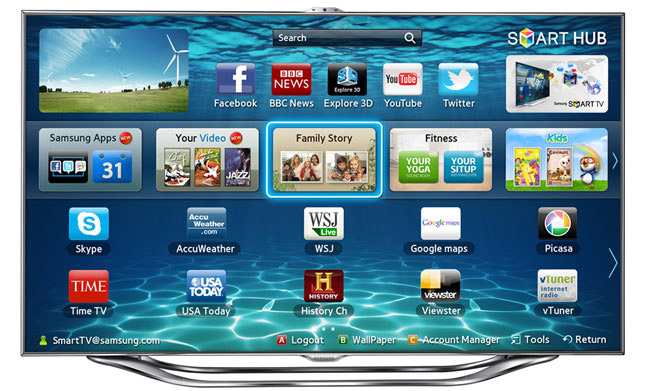High-definition television has brought clear, vibrant images to the living room. And now many consumers are replacing their sets sooner than they have in the past, or adding sets to other rooms in the households. A report released by NPD DisplaySearch finds that Global TV replacement is now under seven years.
Several factors account for the faster replacement cycle. Declining prices, a wider variety of sizes, newer features and advances in technologies are all influencers for people buying a new TV. The report finds the buying cycle has recently decreased from 8.4 to 6.9 years globally. In most markets, the average age of a primary TV in households ranges between four and seven years. India has households at the top of the range, with an average 6.7 years; urban areas of China had an average age of TVs at 3.5 years.
Across 14 different markets, NPD DisplaySearch finds that in the next year 31 percent of households plan to replace an existing TV. It also finds that 22 percent plan to add a new TV. Additional TVs may be for the kitchen, bedroom or another room in the house.
"The rate of TV replacement varies, but on a global basis, the majority of households are still replacing CRT TVs with flat panel TVs. We are also observing mature markets, such as the US, the UK, and others, replacing their first-generation flat panel TVs," said Riddhi Patel, NPD DisplaySearch research director, consumer insights, in a statement on the report. "Overall, LCD TVs in the range of 32-44-inches are the most popular for planned purchases."
While prices are falling, and that contributes to the increase in replacement rate of TVs, it's not even among the top three reasons for replacements. Consumers said the desire to trade up in size tops the reasons for buying a new TV, followed by wanting to own a flat panel TV with improved picture quality. Price does play a factor, especially in increasing flat panel TV sales to replace CRTs. Price also plays a role in shortening the replacement cycle. Consumers are more likely to replace a TV as the prices fall, or models go on sale.

TV manufacturers are pushing to introduce new and advanced features such as 3D and internet connectivity. This results in smaller profit margins due to increased R&D costs accompanied by falling prices. But these new features do tempt consumers to buy new TVs. One surprising finding in the study was that moving is not as strong a driver for replacing a TV as it once was.
"The good news is that a large number of markets still have a long way to go toward replacing all CRTs with flat panel TVs, which should continue to sustain growth, but mostly in emerging markets," Patel added.
Nine markets in the study have over 50 percent penetration of flat panel TVs. About 40 percent of households in five markets still have CRT sets they're waiting to replace. Households in emerging markets such as Russia, Brazil, Mexico and China are more likely to replace or add a TV than countries such as the US and in Europe where flat panel HDTVs became available earlier.
While bigger is often seen as better, 32-inch TVs are the most desired size in most emerging markets. In mature markets, larger screen size in the 40-44-inch range are predominant among planned purchases.
The 14 markets analyzed include rural and urban China, India, Indonesia, Japan, UK, France, Turkey, Germany, Italy, Brazil, US, Mexico and Russia.
For More Information: